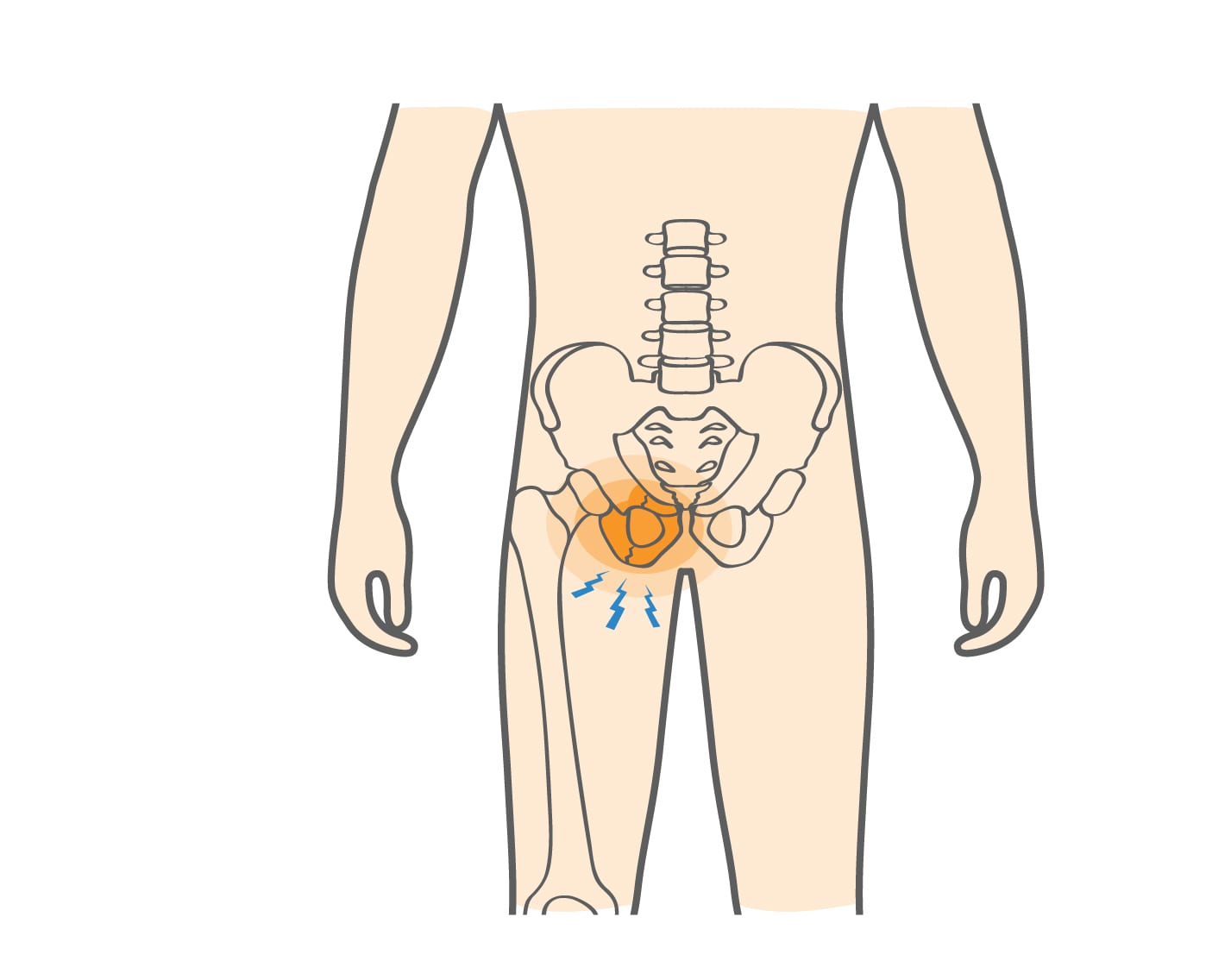What we commonly call our “hip bones” are actually each three separate bones: the pubis, the ischium, and the ilium. The pubis itself is made up of two smaller bones: the superior ramus and the inferior ramus. These two rami, located at the front of each side of the pelvis, are what we refer to as our “pubic bones.” The two sides of the pelvis are connected in the middle by the pubic symphysis, a special joint made up of tough fibrocartilage.
The pubic rami can break (fracture) either from repetitive stress (known as a stress fracture) or from a collision injury (known as a traumatic fracture). Pubic rami fractures and other pelvic fractures are categorized as either stable fractures (when only one part of the pelvis breaks) or unstable fractures (when the pelvis breaks at multiple points). While only about 3% of fractures among adults are stable pubic rami fractures, some athletes are at greater risk for this injury.


